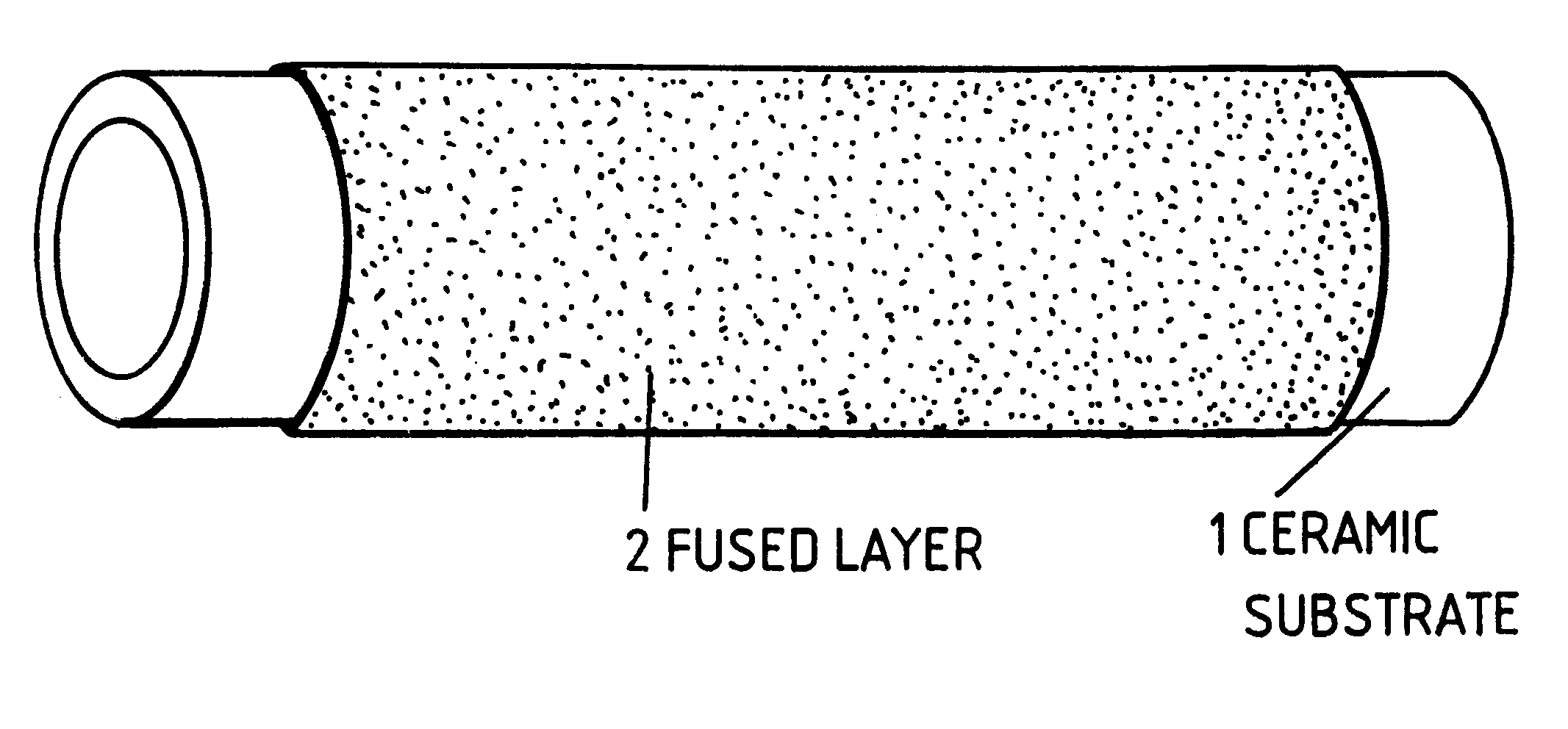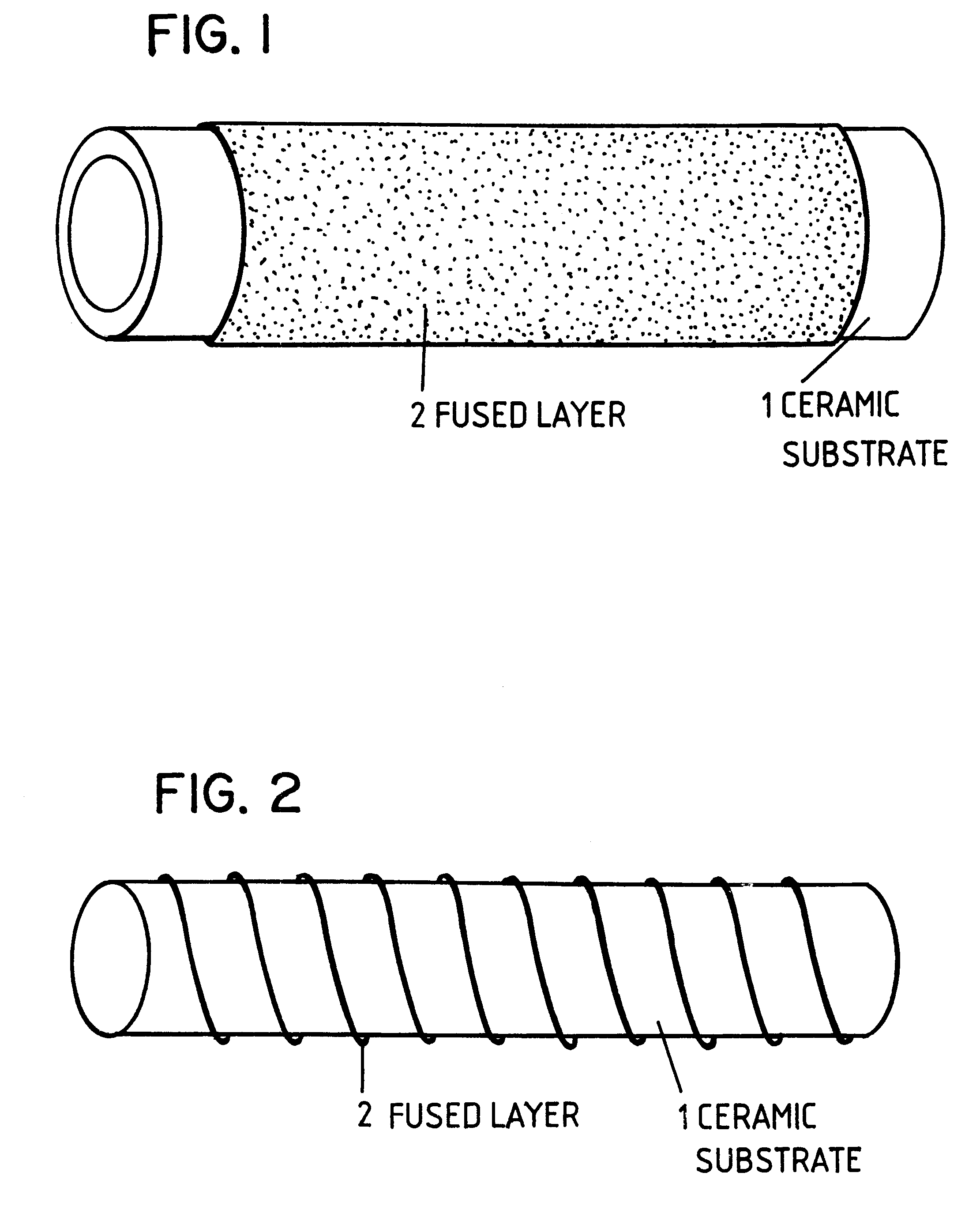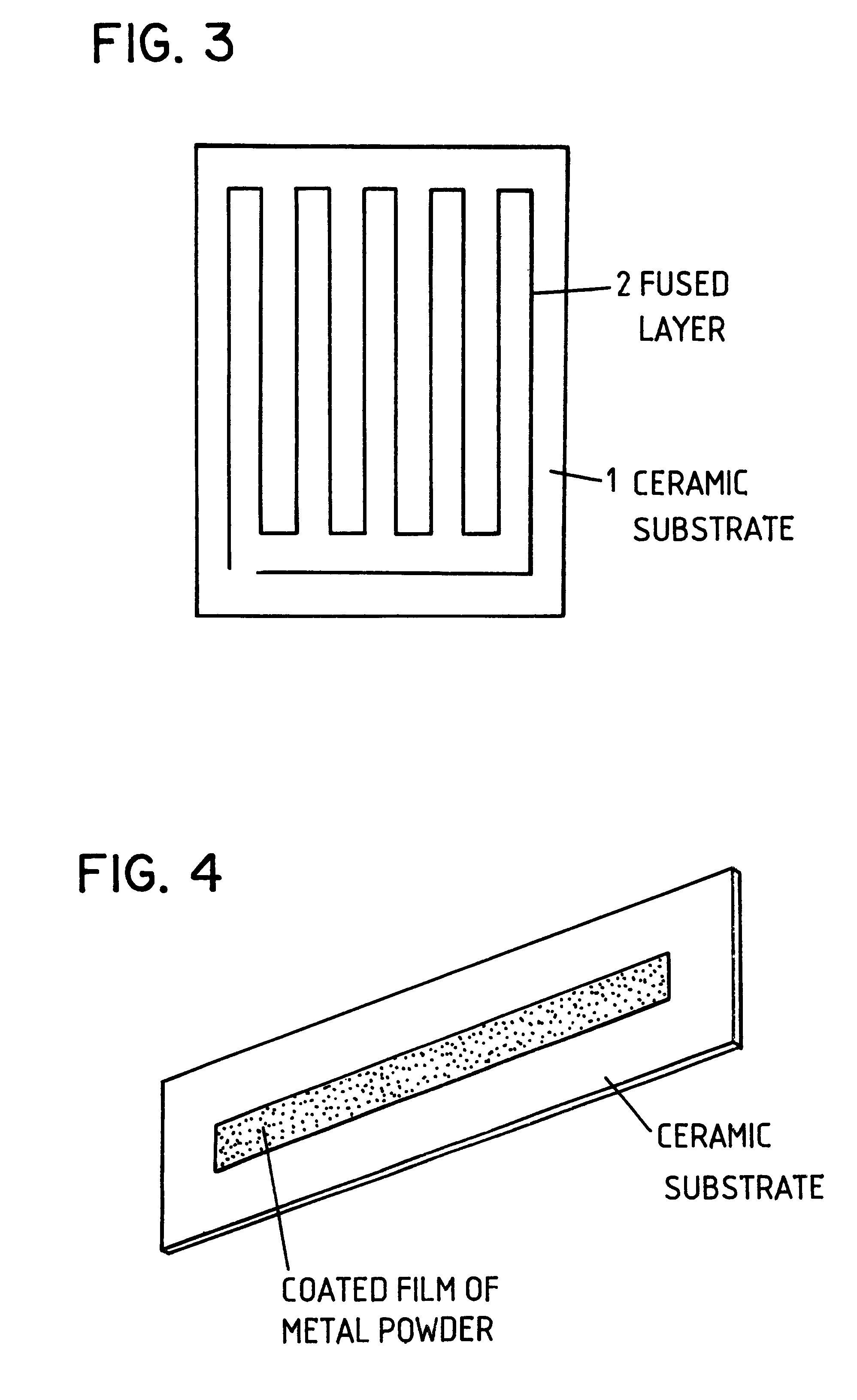Method of manufacturing an electric heating element
a manufacturing method and heating element technology, applied in the direction of heating element shapes, ohmic resistance heating, hot plate heating arrangements, etc., can solve the problems of low adhesion strength of electric heating circuit, and affecting the uniformity of temperature distribution
- Summary
- Abstract
- Description
- Claims
- Application Information
AI Technical Summary
Benefits of technology
Problems solved by technology
Method used
Image
Examples
example 1
Double-side Fusing Type
Ceramic substrate: Four materials of aluminum nitride, silicon nitride, silicon carbide and alumina are used. The silicon carbide has an electrical resistance of 10.sup.11 ohm.multidot.cm.
Substrate dimension: A plate of 10.times.30.times.0.6 mm
Fused metal: The above-mentioned substrate made of aluminum nitride, silicon nitride, silicon carbide or alumina is coated with a paste of metallic powder having the following composition (shown in Table 1) mixed with ethanol solution of polyvinyl alcohol, in an area 2 mm wide and 22 mm long as shown in FIG. 13. This is laminated with a ceramic substrate having holes (1 mm in diameter) on both ends as shown in FIG. 14, with the assembly being dried and then heated to melt and fuse as shown in FIG. 15. The holes are separated 20 mm apart.
As the Si material, powder made by grinding a semiconductor substrate and powder of 99.999% purity (Al, Mg, Ca, Na<=1 ppm) were used. The powder made by grinding a semiconductor substrate...
example 2
Heating Test
The sample of Example 1 was heat-tested with an alternate voltage applied. A cycle of heating up to 500 C. in five minutes and then leaving to cool down to the normal temperature was repeated 100 times. None of the samples showed peel-off or crack of the heater.
Then oxidation resistance of the fused metal was tested. The sample of Example 1 was heated at 1000 C. for five hours. No change in electrical resistance due to oxidation of the fused film was observed.
example 3
Comparison of Films for Uniform Fusibility
A heater having a heater circuit fused to one side of a ceramic substrate (single-side fused structure) and a heater having a heater circuit fused to two ceramic substrates interposing the heater circuit (double-side fused structure) were compared for uniformity of thickness (convexo-concave, flatness), uniformity of width and surface property.
Ceramic substrate: Aluminum nitride substrate measuring 100.times.100.times.0.6 mm
Fused metal: Two components having different levels of wettability for the fused metal. High-purity Si (99.999%) and Si-25% Ti were selected and compared.
Si powder (particle size under 325-mesh) mixed with ethanol solution of polyvinyl alcohol into a paste was printed to the surface of the aluminum nitride substrate in a circuit pattern shown in FIG. 16. Width of the circuit was 10 mm and space between adjacent circuits was 5 mm.
The single-side fused sample with the circuit printed on one side thereof was dried, and then ...
PUM
| Property | Measurement | Unit |
|---|---|---|
| electrical resistance | aaaaa | aaaaa |
| diameter | aaaaa | aaaaa |
| purity | aaaaa | aaaaa |
Abstract
Description
Claims
Application Information
 Login to View More
Login to View More - R&D
- Intellectual Property
- Life Sciences
- Materials
- Tech Scout
- Unparalleled Data Quality
- Higher Quality Content
- 60% Fewer Hallucinations
Browse by: Latest US Patents, China's latest patents, Technical Efficacy Thesaurus, Application Domain, Technology Topic, Popular Technical Reports.
© 2025 PatSnap. All rights reserved.Legal|Privacy policy|Modern Slavery Act Transparency Statement|Sitemap|About US| Contact US: help@patsnap.com



